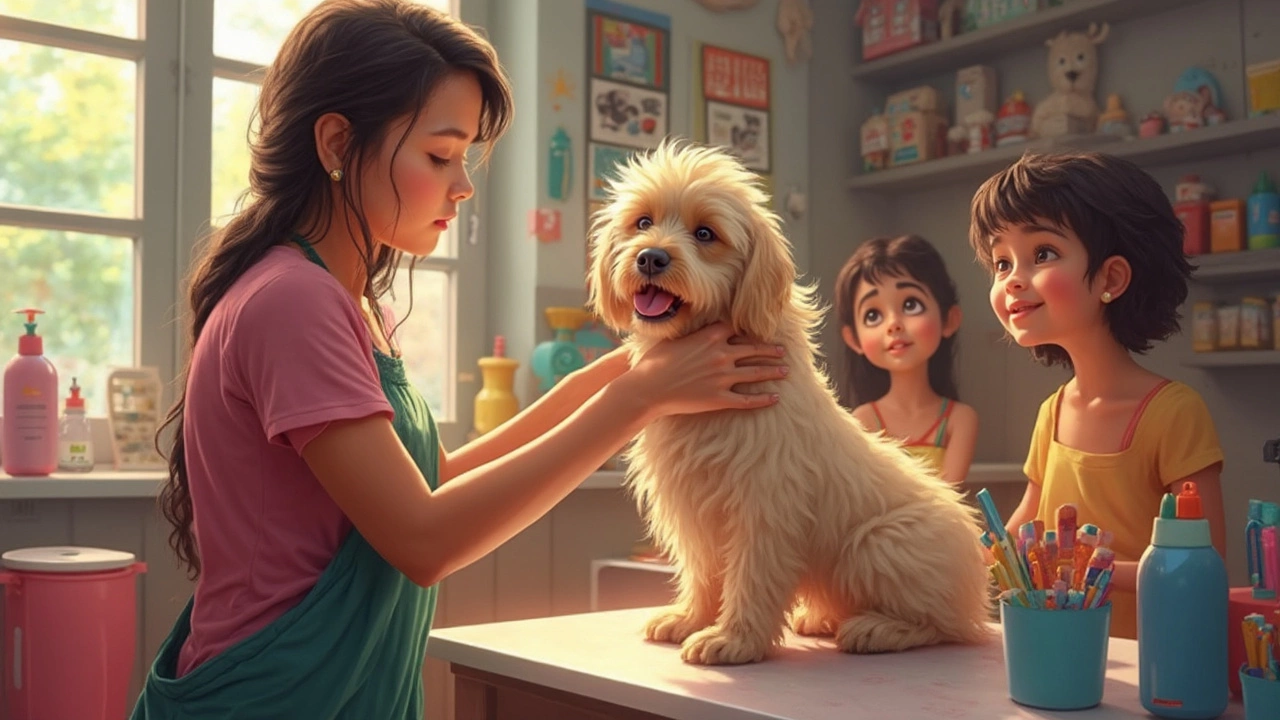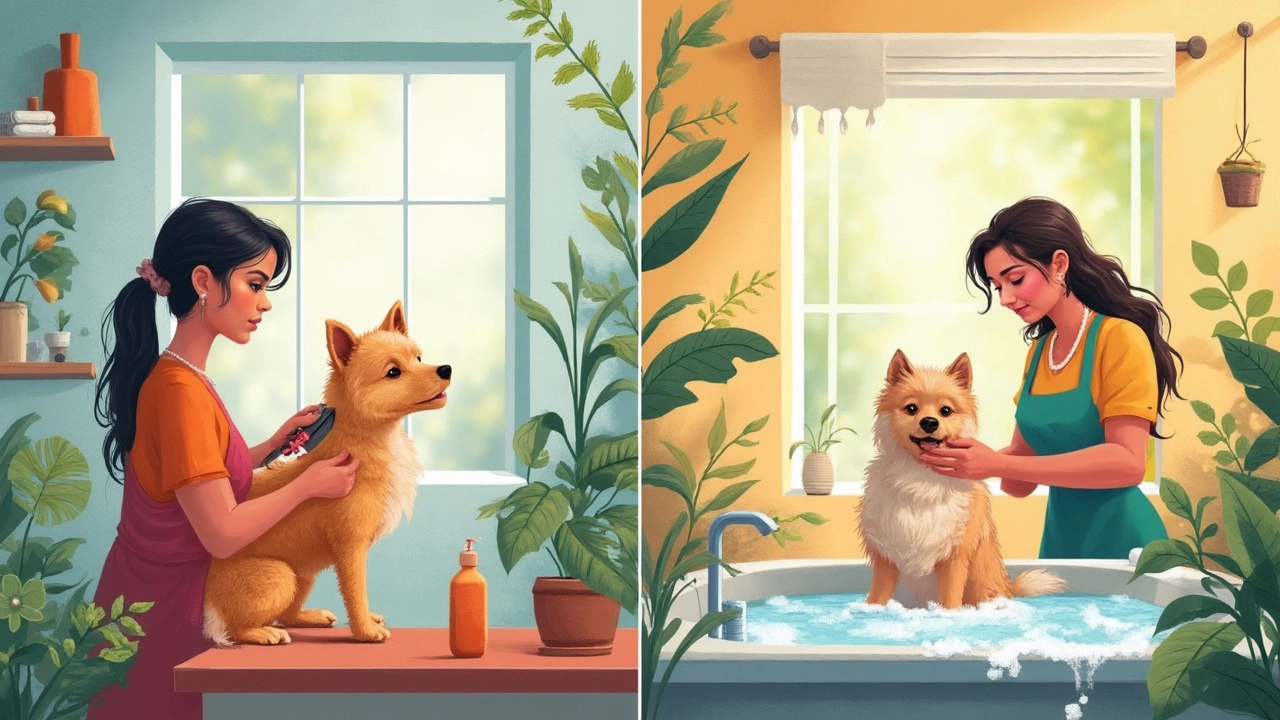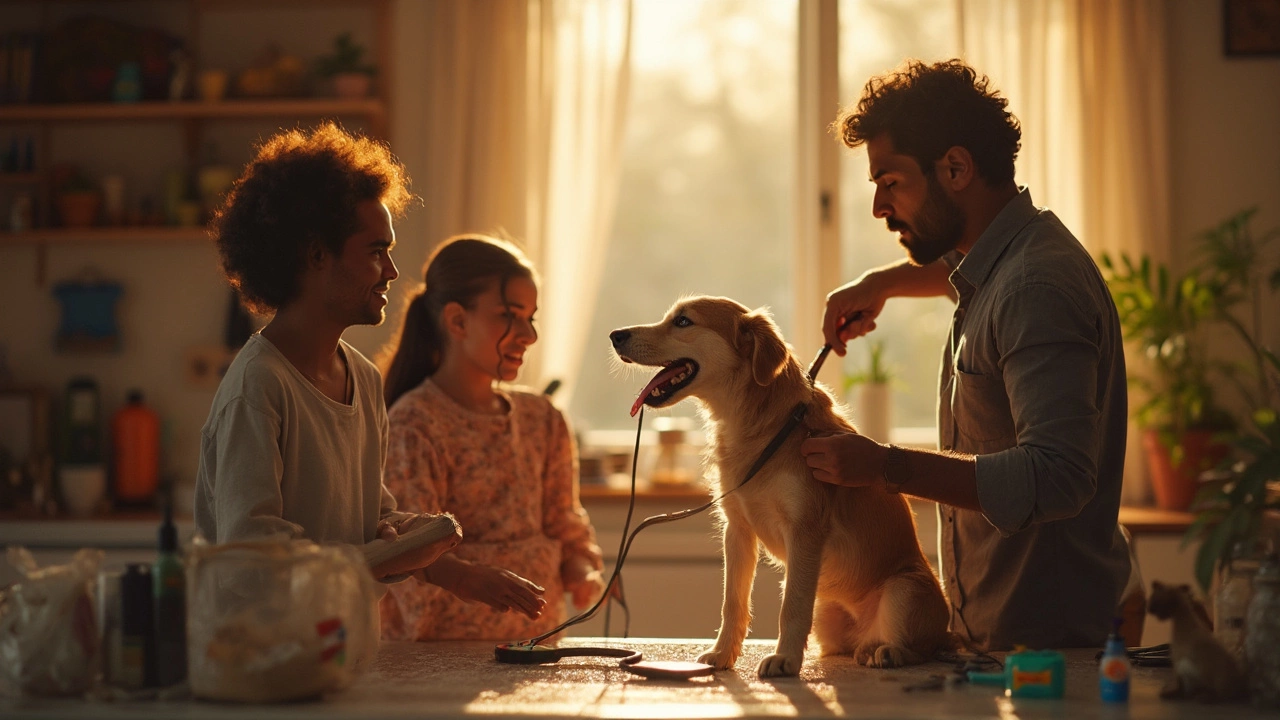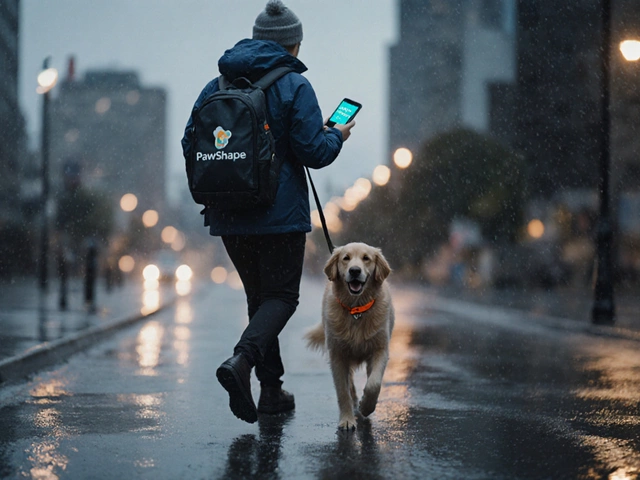
Ever watched your dog roll in something wild and thought, “How in the world do groomers even tackle this mess?” It’s not just you. The whole routine behind how professional groomers handle a shaggy, sometimes stinky pup is actually full of smart techniques. And whether the bath comes before the haircut isn’t just up to personal taste—it makes a big difference for your dog’s skin, fur, and experience. Most pet owners don’t realize a groomer’s day is part science, part art, and a lot of nose-holding when those especially ‘fragrant’ clients come through.
The Sequence Secret: Why Order Matters in Dog Grooming
The big question: do pro groomers wash or cut dog fur first? If you peek behind the scenes at most dog salons, you’ll discover washing usually comes first, but not always—there’s a method to the madness. Here’s the inside scoop. If you try to trim a dirty, matted coat right away, clippers and scissors will dull fast, and dirt pulls and drags on the blades. Plus, if Fido’s got tangles, cutting before bathing can make things worse, because dirt acts like sandpaper. A clean, de-matted coat is a happier coat to work with for everyone. Still, groomers sometimes do what’s called a "rough cut" or "pre-clip" before the bath for poodle mixes or other breeds with super long hair or thick mats. This pre-clip gets rid of bulk and especially mess-prone areas so the wash is more effective and water can actually reach the skin.
There are some pros who swear by always bathing first, saying it helps get rid of all the oils and debris for the sharpest, cleanest finish after the trim. Others say: if the coat’s overgrown and the dog looks more like a yak than a pet, cutting before the bath saves time—and sometimes helps nervous dogs by shortening the overall process. A 2022 survey by Pet Groomers Association found 74% of members wash first for most breeds, but about 23% pre-clip before bathing for specific coat types or conditions. The rest used a mix of both. So, it’s not one-size-fits-all, but understanding why will help you keep your own dog looking good in between pro appointments.
Step-By-Step: The Actual Grooming Flow
Let’s break down a real groomer’s workflow, so you know what’s happening when you drop your pup off. First up is a thorough check—groomers inspect skin, ears, coat condition, and look for lumps, parasites, or tangles. This step matters because they need to spot anything unusual before water or scissors hit the fur. Next, if the dog is especially shaggy, matted, or needs a big style change (like a summer cut), a groomer does a rough pre-clip. Think of it as mowing an overgrown lawn before planting flowers. They’re not going for style here, just reducing bulk and getting mats out.
After pre-clipping (if needed), it’s bath time. Groomers use special pH-balanced shampoos—regular people soap can dry out skin or mess with the coat’s natural shine. Even dogs with skin sensitivities get hypoallergenic formulas. Once washed thoroughly (yes, some of them even do a double-wash for extra-grubby pups), towels and high-powered dryers do the trick. Groomers aren’t just making dogs smell fresher; drying is crucial because damp fur is hard to trim evenly and can hide skin issues. Now with the coat clean and dry, the groomer combs out lingering tangles—the hair needs to fall in its natural direction and be totally smooth, or the final result looks uneven.
Now comes precision clipping and styling. Groomers reference breed standards (or owner requests—so if you ask for “fuzzy ears” or a “lion tail,” this is their cue!) and use clippers, scissors, even thinning shears. The final step is finishing touches: nail grinding or clipping, ear cleaning, and sometimes even teeth brushing or a spritz of doggy cologne. Every step helps with dog hygiene and comfort. Check the table below to see the average time each stage takes at a typical salon:
| Step | Average Time (minutes) |
|---|---|
| Initial Inspection | 5 |
| Pre-clip (if needed) | 10 |
| Bath & Dry | 20–30 |
| Brushing | 10 |
| Haircut & Styling | 20–40 |
| Nails/Ears/Finishing | 10 |
Sure, each dog is different—giant doodles take much longer than a tiny Chihuahua, but the order stays basically the same. The big lesson: most dogs get a wash first, but there’s a solid reason if your groomer pre-clips. Just ask if you’re curious; they’re usually happy to explain.

The Right Tools and Products: What’s on the Groomer’s Table?
Ever peeked into a grooming kit? It’s not just clippers and some shampoo—there’s a whole arsenal. Professional groomers use high-end tools designed for both comfort and performance. For washing, they’ve got nozzles that reach down to the skin, massaging scrubbers, and even specialized dryers that get every hair dry fast without overheating. Shampoo and conditioner are usually breed-specific. For example, a Maltese gets a whitening shampoo, while a Labrador might need a de-shedding formula. And if you’re battling fleas or allergies, your groomer knows the exact product that will help, not hurt.
After the bath, there are brushes for every coat type: slicker brushes for thick undercoats, pin brushes for long flowy hair, and combs to get into tougher tangles. Scissors range in size and shape. Thinning shears make natural-looking feathered edges, while curved scissors help tidy up paws and faces without risking nicks. Clippers come with different blade guards to set the exact fur length. Good salons disinfect blades and tools between pets, which is huge for preventing skin infections.
One underrated tool? The forced air dryer. Unlike your own hair dryer, this beast doesn’t use high heat but strong air pressure. It’s what gets all the loose shedding fur out—and lets the groomer see down to the skin. That’s when lumps, ticks, and skin rashes show up. A 2021 safety study in PetGroomer.com’s industry report revealed that 97% of professional groomers say their tools are only as good as their maintenance; dull blades and unwashed brushes cause more skin problems than any shampoo mistake. Moral: better gear, better haircut, and healthier dogs.
Breed Differences That Influence Wash or Cut First
If only every dog’s hair grew the same way. Some breeds have a double coat—think Huskies, Golden Retrievers, and Corgis—while others have hair that just keeps growing (hello, Shih Tzus and Poodles). For double-coated breeds, the focus is on deshedding and getting under all that fur to clean the skin. Cutting these coats too short isn’t good, because it can mess with their natural insulation. The pro strategy is usually a good bath first, then detangle and remove excess undercoat with special rakes or combs. After drying, only minimal trimming happens—mostly to tidy up uneven bits or paws, not full-body haircuts.
Dogs like poodles, Bichon Frises, or doodle mixes need regular haircuts, just like people. Their fur can mat quickly, and shampoo barely gets through if mats are tight. With these breeds, a pre-clip helps break up mats and get the coat short enough for the shampoo to work. After washing, the finer details happen. The bath gives hair a fluffy volume, letting groomers make those iconic round heads or pom-pom tails. Even short-haired breeds get a benefit from the bath-first routine: it removes dander, loose fur, and brings out a proper healthy shine. Interestingly, in a blog post from leading salon Bark Avenue (2023), groomers shared that clients who stick to a “wash before cut” routine see fewer hot spots, fewer yeast infections, and better coat quality over time.
There are always exceptions. Dogs with severe mats, skin issues, or those who are frightened by clippers may get a slightly different sequence. Groomers always adjust for a dog’s comfort first, but knowing your pup’s breed can help you understand their choices—and maybe even maintain their cut at home between appointments.

Troubleshooting Common Myths and Mistakes
Let’s clear up some rumors about grooming. Some people think washing before cutting is a waste of time, but really, dirt dulls blades and tiny pebbles caught in fur have broken many a $100 clipper blade. Others believe if their dog is just getting a “neaten up,” a bath isn’t needed—but even the smallest trim looks rough if the hair is oily or clumped together. More myths? Some say frequent washing destroys a dog’s coat. Pure myth: professional shampoos for dogs are pH-balanced and designed for exactly this use. Over-washing with human shampoo is the real issue. Dog skin is more alkaline, so they need their own formulas.
If you try DIY grooming at home, the single best tip is always brush before you bathe. Dirty, tangled fur mats up tighter when wet. If you see a pro groomer, trust their judgment on order of things. If your dog has medical issues—open wounds, hotspots, or allergies—definitely share that with your groomer before dropping them off. A responsible groomer will pick the process and products that keep your dog safe and comfortable. According to the AKC (American Kennel Club), grooming professionals now average two to five dogs a day, depending on breed and coat condition, and about 40% say explaining the process to owners has reduced confusion, especially about why some dogs get a pre-clip.
- Always brush out major mats before bathing at home.
- Use only dog-specific shampoos and conditioners—never human or baby products.
- Let your groomer know if your dog is nervous or has health concerns before the appointment.
- If your groomer needs to pre-clip, it’s usually to protect their tools and your pet’s skin.
If you’re ever unsure, just ask for a quick explanation of your groomer’s plan. Most love sharing their expertise; they want your pup to be both handsome and happy.





Write a comment